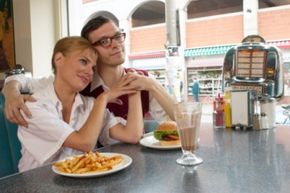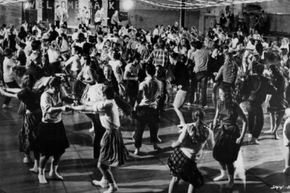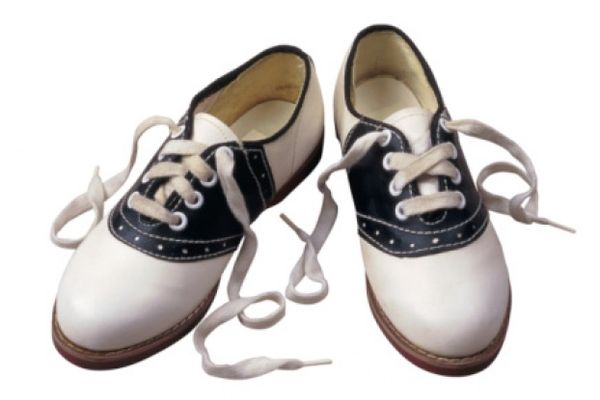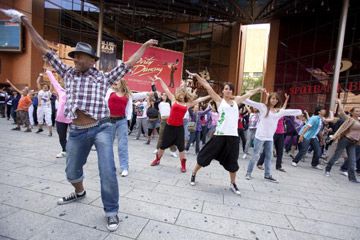To some, thinking about life in the 1950s harkens back to a golden age of wives in heels and pearls. To others, it symbolizes the rise of suburbia and the infiltration of TV into the living rooms of those far-sprawling abodes. To still more, the decade smacks of the Cold War and rising tension in race relations. But for many, nothing characterizes the '50s more than the sound of rock-and-roll, the swirl of skirts, the crinkle of lettermen's jackets and the soft scuffle of socked feet across a wooden gym floor.
For the 1950s was the height of the sock hop -- a pop culture phenomenon similar to the informal high school dances of today. The hops got their name because of the requirement that the frolicking teens remove their shoes so they didn't scuff up the wooden floors of the school gyms that hosted the mixers.
Advertisement
Not everyone thought sock hops were great fun, however. Despite the fact that schools condoned such activities, many parents were horrified by the idea since sexual taboos appeared to be shattering right and left: The music and the dances made popular at sock hops were considered far too sexualized by the older, more conservative set. Many of the most popular songs were also the work of black musicians, and racial tensions were starting to simmer to the surface during the 1950s and in the years to follow.
The new music and dances were coupled with an ongoing cultural phenomenon -- in part fueled by movies and other entertainment medium -- that deemed fun-seeking youths as dangerous. But if you were lucky enough to be allowed out of the house, what was it like to attend a sock hop? Find out about the sights and sounds on the next page.
Advertisement




